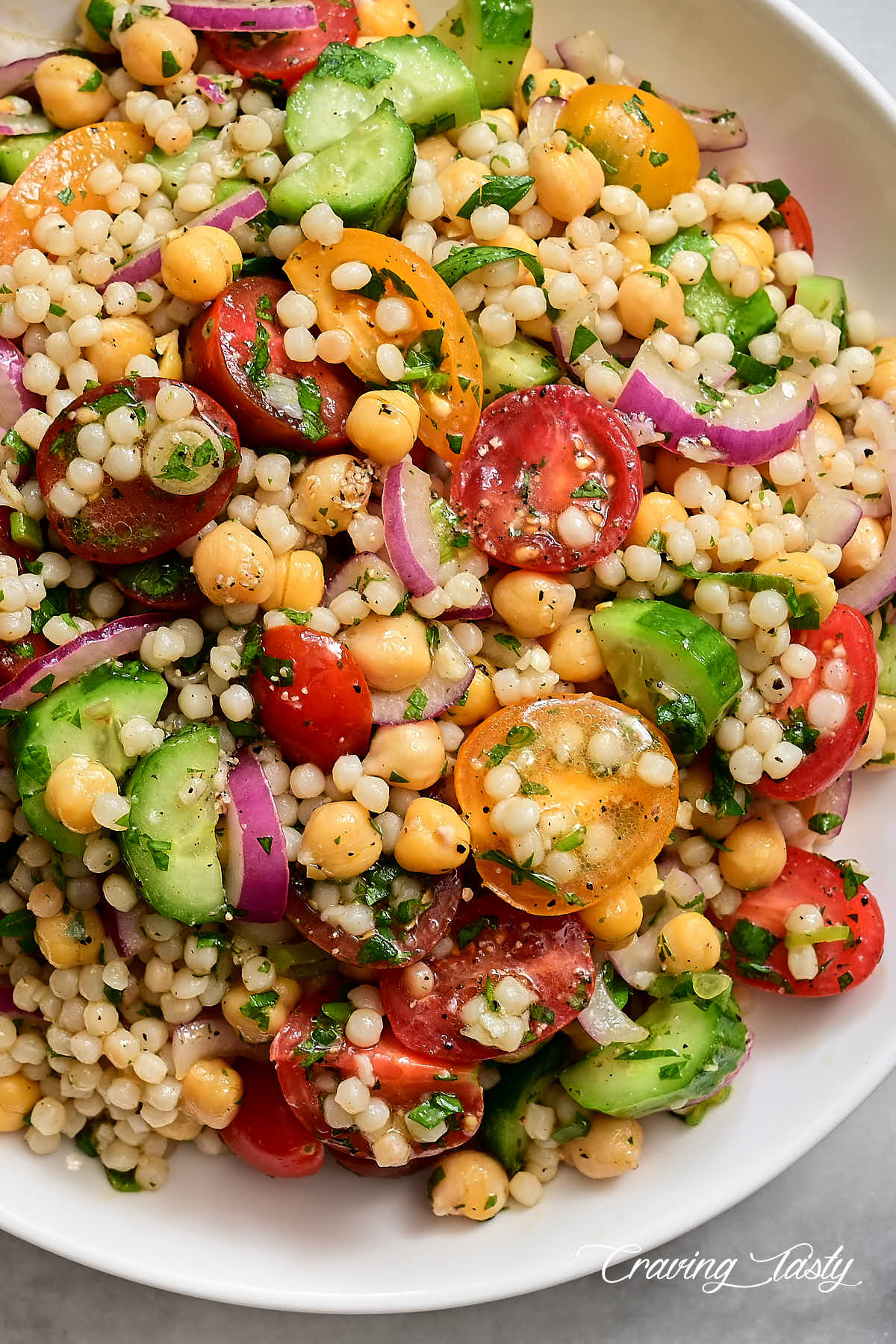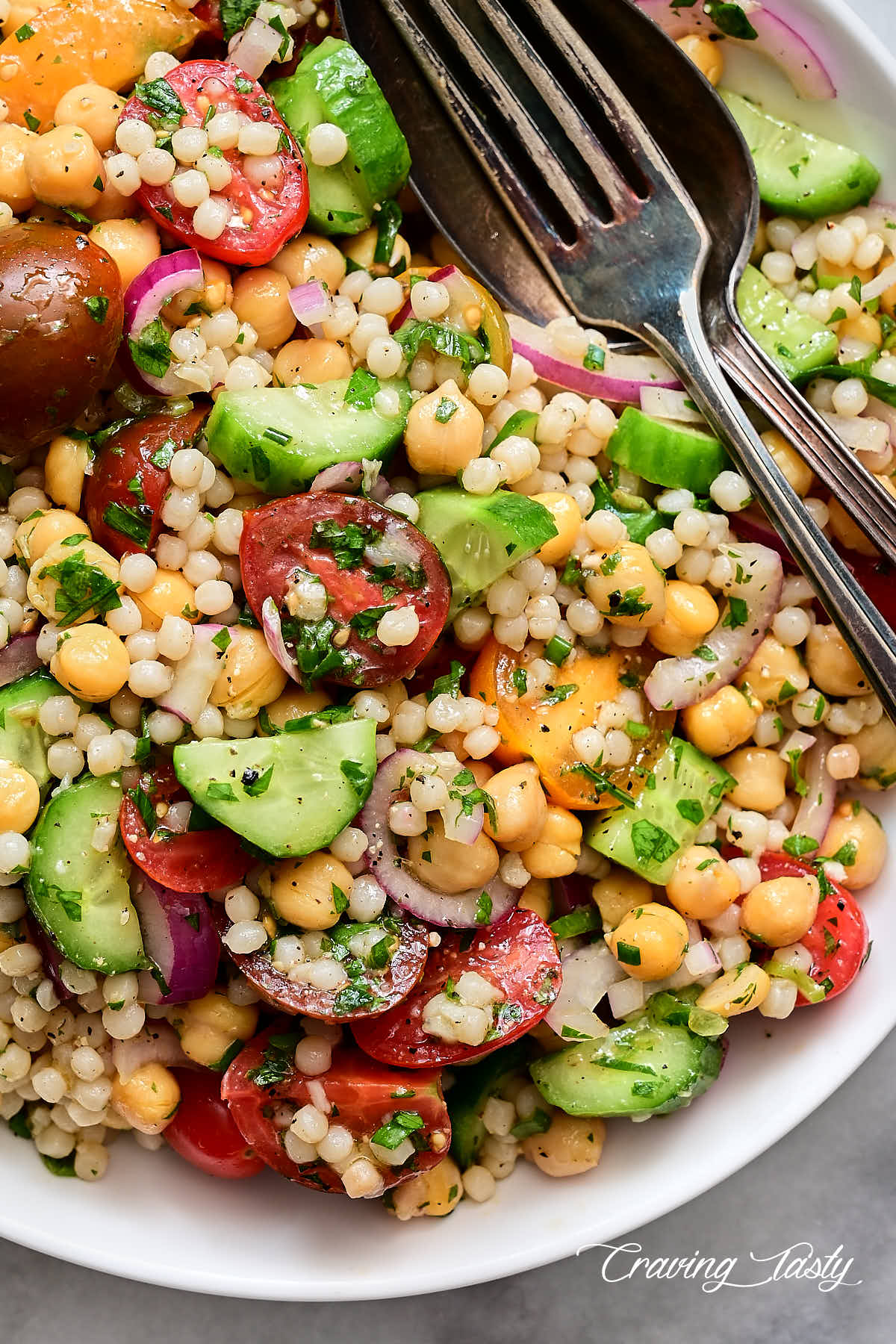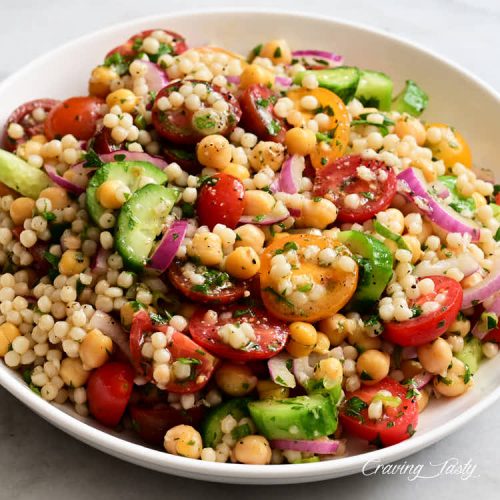If I were to rank salads by how irresistible they are, this Israeli couscous salad would be way up at the top along with my all-time-favorite rustic tomato and cucumber salad. I can’t resist this salad and sneak a few tablespoons well before I sit down to have a meal. It’s very balanced and enormously tasty. There is a variety of textures in it, from crunchy to soft and buttery. The lemon and olive oil vinaigrette coats every ingredient with rich summery flavor. The couscous in this salad is like a glue that brings all ingredients together seamlessly and makes everything taste times better. To a large degree, it’s the couscous that makes the salad so delicious and so addictive.
What is Israeli couscous?
Israeli couscous, or ptitim, is a type of toasted pasta shaped like rice grains or little balls was developed in Israel in the 1950s when rice there was scarce. Outside of Israel ptitim is most commonly known as Israeli couscous, Jerusalem couscous or pearl couscous. In Israel, it originally became known as ‘Ben-Gurion rice.’ The texture and taste of Israeli Couscous is reminiscent of pasta and is best when cooked al dente. It makes a great addition to salads and elevates them to a whole new level.
Cooking Israeli couscous for the salad
To get the most flavor out if it, Israeli couscous should first be toasted in a little bit of oil. This will give it a nutty fragrance. After that pearl couscous can be cooked in water similar to pasta. Some recipes recommend a one a quarter cups of water per cup of couscous, while others suggest plenty of water and draining leftover water off. Both approaches work great as long as you cook Israeli couscous al dente. Overcooked couscous is just as bad as overcooked pasta in a pasta salad or soggy croutons in a Caesar salad.
Making Israeli couscous salad
Other than pearl couscous that can be found in most supermarkets or online, this salad requires very basic ingredients: tomatoes, cucumbers, red onions and fresh mint, garlic and parsley. This recipe also includes chickpeas which add a delightful creamy texture. Some variations of the Israeli couscous salad instruct to cook tomatoes. An Israeli-English celebrity chef Yotam Ottolenghi in his book Plenty: Vibrant Vegetable Recipes proposed a recipe which uses a variety of tomatoes cooked to different levels. It’s a great alternative but in this recipe I use only raw tomatoes. I love the freshness and the brightness of raw tomatoes. This also makes it much easier to make this salad. Just slice and chop vegetables and herbs and mix with the rest of the ingredients. If you opt to cook chickpeas make sure to start soaking them the night before and start boiling an hour before making the salad. If that sounds like too much of trouble you can always use canned chickpeas. Just remember that chickpeas prepared from scratch taste creamier and richer.
Serving and storing the salad
This salad is at its best when served at room temperature the same day it’s made. I like making this salad a few hours before serving. It allows the flavors to develop and the couscous and chickpeas to absorb some of the dressing and become more flavorful. You may be tempted to prepare the vegetables ahead and store them in the fridge but try to resist the temptation. Tomatoes and cucumbers taste best when stored at room temperature. You can prepare couscous and chickpeas in advance but chop those veggies the day of serving the salad. It will only take a few minutes. Any leftovers can be refrigerated for up to 2 days but the quality will decrease over time.




